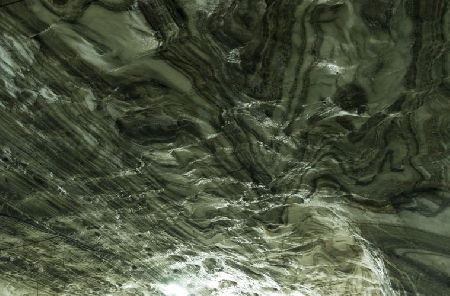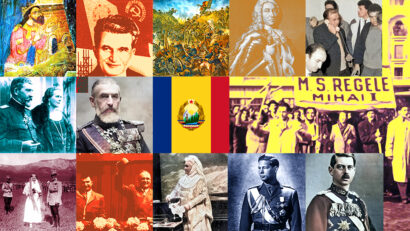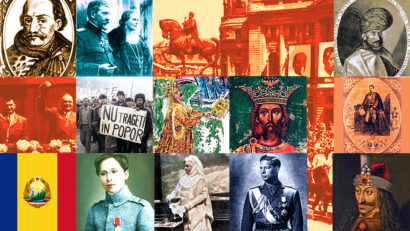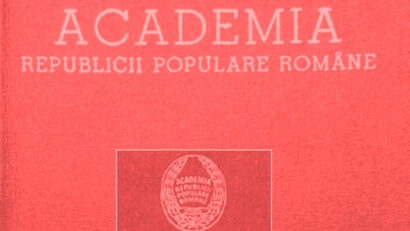Salt in the Romanian Space in Prehistoric Times
Archaeologists have found prehistoric traces of salt exploitation in the Carpathian basin, the largest salt deposits in Europe.

Steliu Lambru, 28.01.2013, 13:35
The salt route led to western and southern Europe, confirming the theory according to which the first European identity is linked to salt trade.
The city of Rome boasts what was once called “via salaria”, the route along which salt was brought into the city. According to some theories, the Roman expansion towards ancient Dacia and the Roman conquest of this territory were not carried out exclusively for political reasons, as the Romans actually intended to seize control over natural resources, particularly gold and salt. Salt continued to be regarded as an important resource along the years, proof thereof being the Salt Road in the capital city Bucharest, dating back to the Middle Ages.
There are few things around us whose stories start in prehistoric times and can be followed uninterruptedly until present. That is the case of salt. Prehistory is the history of humankind in the period before recorded history, about 5 million years ago, before the first towns were set up and writing was invented. The Carpathian space was the main source of salt for the European man. Carol Capita, a prehistory professor at the Faculty of History, with the Bucharest University, will tell us how important salt was for the prehistoric human communities:
“Salt is an important component of all living organisms and an essential element of electrolysis that ensures the well functioning of the body. Whether we talk about oxidation or reduction processes, salt is an element that keeps our bodies healthy. In another line of thought, it is also a fundamental element for the existence of communities, not only in the Romanian space but also in the Netherlands, and French area, for instance. There is solid archaeological evidence in support of the idea that salt exploitation started around the year 10,000 BC with rock salt, given the extensive tradition of hard rock exploitation. As far as the Romanian area is concerned, in Covasna, in Transylvania, as well as in Valcea, in Wallachia there is proof of rock salt exploitation as of 1800 BC. Interestingly enough, it seems that there is a connection between various advanced and rich Bronze Age cultures and the existence of salt deposits, be they small or large. The Sarata Monteoru case is illustrative. This culture has spread from Central Europe to the southern Danube area. A more emblematic case is that of the Valcea area, boasting the Buridava site, which is a highly populated area. “
From the Carpathian arch, salt was carried to two different directions: to the west and northwest and another one to the south and southeast.
“If we looked at a map and tried to locate salt exploitations in relation to ceramics centres, which are the most visible form of archaeological vestiges, we can see that the Romanian space provided rock salt to two areas that were fundamental in the formation of a European culture. On the one hand, there is the route leading from Transylvania to Hungary, Slovakia and further away to the German area, which traditionally lacked salt. This, for instance, ensured copper import from the Central European area, lying at the foundation of some spectacular Bronze Age cultures from Romania, such as the Wittenberg culture. On the other hand, also taking ceramics as a landmark, we can retrace the links with the space located south of the Danube, especially the Dalmatian area, the western Balkans and Thracia. These routes from east to west and from north to south were also the paths through which the Indo-European migratory populations came, in the last phase of the formation of Indo-European peoples in the Romanian space. Studies show that the Indo-European populations were pastoral populations. And there is a close relationship between pastoral cultures and the existence of rock salt. Consequently all these elements make us think that salt in the Romanian space was key to the formation of a cultural horizon marking the end of European prehistory.”
The salt in the Carpathian Mountains was not only a necessary food. It is considered one of the first elements that led to the setting up of the first forms of rapprochement between communities and individuals located far away from one another.
Carol Capita:“Maybe the Romanian space is not that central in the genesis of European peoples, there were different ethno genesis nucleuses, so I would be more reserved in this respect. Anyway, the Romanian salt is more important than gold in the process of cultural diffusion of some common European cultural characteristics. Most probably salt was the ‘ferment’ for creating a corridor for the circulation of ideas, ornamental models, objects, and population, up to a certain point in time. One can live without gold but not without salt. What is significant about the Romanian salt is the amount and the easiness of exploitation. You don’t need to dig deep to exploit salt. It was only later, when there emerged the phenomenon of salt washing, that micro-relief issues started to occur, more precisely dangerous cavities. Exploitation of salt was made as if in a quarry.”
After millions of years, the salt deposits in the Carpathian basin are still exploited and seem to never end. For today’s generations salt is no longer an element of rapprochement, but a mere condiment.





























